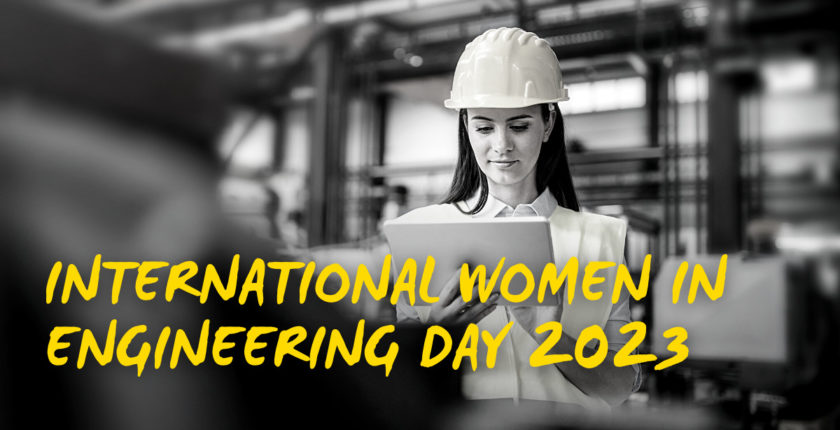Women in Engineering The Challenges and Opportunities in 2023
So, International Women in Engineering Day is on 23 June 2023. A day where we share all of the fantastic work that female engineers around the world are doing.
This year, we’re reflecting on the article that we shared last year to look at the challenges and opportunities women in engineering have in 2023.
Women in Engineering, the Challenges in 2023
2023 is a big one, as today marks 10 years of International Women in Engineering Day. The day was started to help close the gap and raise awareness of the amazing things women have done in the industry, despite their disadvantages.
And even 10 years on, it is still as prevalent and needed. With only 16.5% of the workforce now female. It’s a big jump, when you consider that only 11% of the workforce was female in 2017. But the progress is slow and there has been no increase since our previous article in 2022.
Shockingly, a few sectors have even shown a 0% increase in representation between 2010 and 2021. This includes:
- Toolmakers and associated professions
- Air conditioning and refrigeration engineers
- Steel Erectors
The key challenge is to tackle the stereotypes that are deterring many women from entering the industry. There are roadblocks we need to move that may make women more likely to choose engineering.
As well as this, the low percentages could still be intimidating to those underrepresented groups wanting to get into the industry. It’s likely deterring young people interested in the sector as their career.
This is starting to show, as a report released by EngineeringUK from earlier this year has found some shocking statistics.
- 115,000 more girls would need to study A Levels in Maths or Physics to reach the same number of male undergraduates.
- 23% of male students studying these subjects at A Level, went on to study Engineering in Higher Education.
- Only 8% of female students studying them went on to do the same.
Looking at these stats, it certainly seems as though female students are facing further blocks when it comes to making that jump from A-Levels to further education. There is lots to be done, we’ve come up with a few suggestions below.
Women in Engineering, What can be done in 2023?
But, it is not all doom and gloom. The fact that it is increasing is great news, we just need to continue the push.
Over the past 10 years, we have seen the number of women in engineering rise across most engineering roles. There was even an increase of women in engineering positions through the Covid-19 pandemic.
However, we must continue to voice and understand these statistics. As we need to continue exploring the options of how we (as recruiters, employers and education providers) can do better to decrease this gap.
Many across the industry are echoing what we spoke about last year. Addressing the early stereotyping within the industry and talking about the sector’s potential sooner. This means that we need to be:
- Getting Primary schools involved in promoting the sector.
- Including more GCSE or NVQ qualifications at High-school level.
- Opening up opportunities at A-Level for great representation.
There has been a large push to get more women into high-level STEM education. With the number of women accepted onto full-time STEM undergraduate courses increased by 50.1% between 2011 and 2020. So, being involved early is paying off.
The key message is that by starting sooner, we have more opportunities to break down the stereotypes within the sector to potentially increase the uptake of women in engineering. We know that STEM outreach programmes work in encouraging women to join engineering. Young people that attended engineering-themed careers events/activities (in 2019) were 3 times more likely to consider the industry compared to those that did not attend.
The Opportunities within Engineering for Women
We wanted to talk a little about the opportunities for women.
Engineering is a diverse and innovative sector. Over the last 12 years, the industry has changed and will continue to as engineering practices and technology evolves.
A number of industries have taken huge leaps in representation. Unfortunately, there are no newer statistics for this, but here are a few that had the greatest progress between 2010 – 2021, including the:
- Rubber process operative (from 12.5% to 32.2%)
- Production managers and directors in mining and energy (from 8.5% to 19.6%)
- Electrical engineers (from 1.1% to 12.7%)
- Production and Process engineers (from 7.7% to 19.6%)
The Women’s Engineering Society (who also created this event) has several opportunities to support those looking to get into the industry. From Student conferences, Mentor programmes and even support for employers looking to retain their workforces.
Here at SW, we are eager to represent Women within the Engineering industry, if you are looking for a role and would like support, please do not hesitate to get in contact.
The Opportunities For Employers to Promote Women in Engineering
As we have seen, many industries have made leaps to improve women’s representation. Nevertheless, there are opportunities to improve. For example, the outreach and engagement practices businesses create.
One of the key things that we would recommend to employers is to get out there. Partner with a range of education providers, from primary through to universities, and get involved in their career events. Really push to be present in the upcoming generation’s education.
Tackling this challenge requires a long-term strategy of involvement. So, by starting sooner you’ll have a greater impact on getting women into engineering. Subsequently, you should start creating your plan on how you’re going to be active within education as soon as possible.
If you would like support in creating a strategy to get involved. Or, would like us to represent some of your roles at the careers fairs we attend, reach out to the team today!

